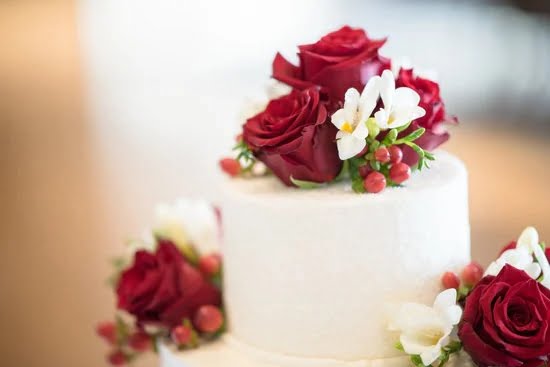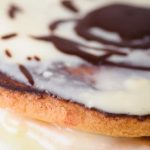Are you planning to decorate a cake that has been stored in the freezer? Knowing how to thaw a frozen cake for decorating is crucial to ensure that your cake turns out perfectly. Properly thawing a frozen cake is essential for achieving the best results, as it can impact both the taste and texture of the final product.
When it comes to decorating a cake that has been previously frozen, taking the time to thaw it properly can make all the difference. In this article, we will explore everything you need to know about thawing a frozen cake for decorating, from the basics of freezing cakes to proper thawing techniques and helpful tips for successful cake decoration.
Whether you are an experienced baker or new to cake decorating, understanding the importance of properly thawing a frozen cake is essential for achieving professional-looking results. By following the tips and techniques outlined in this article, you can ensure that your thawed cake is ready for decorating and that your finished creation will be both visually stunning and delicious.
The Basics of Freezing Cakes
Freezing cakes is a common practice for many bakers, as it allows for better time management and the ability to prepare in advance for special occasions or events. Understanding the basics of freezing cakes is essential for those who are looking to decorate a cake that has been previously frozen. When done properly, freezing cakes can help preserve the freshness and quality of the cake, making it easier to work with when it comes time to decorate.
To freeze a cake, it is important to start with a properly baked and cooled cake. Once the cake has reached room temperature, it can be wrapped in several layers of plastic wrap to ensure that no air or moisture can penetrate the cake.
After wrapping the cake in plastic wrap, it should be placed in an airtight container or freezer bag before being stored in the freezer. It is crucial to label the container with the date of freezing to keep track of how long the cake has been frozen.
Freezing cakes is necessary for certain decorating techniques, especially those that involve intricate designs or delicate decorations. By freezing the cake before decorating, it becomes firmer and easier to handle, which makes it less likely to crumble or break during the decorating process.
Additionally, freezing the cake can help lock in moisture, ensuring that the finished product will be moist and delicious. Overall, understanding how to properly freeze a cake is essential for achieving professional-looking results when decorating a cake.
- Start with a properly baked and cooled cake
- Wrap in several layers of plastic wrap
- Store in an airtight container or freezer bag
- Label container with date of freezing
Proper Thawing Techniques
Thawing a frozen cake properly is crucial for achieving the best results when decorating. The method of thawing will depend on the type of cake, the time available, and personal preference.
Refrigerator thawing is the most common and recommended method for thawing a frozen cake for decorating. This method requires placing the wrapped cake in the refrigerator for several hours or overnight, allowing it to gradually come to room temperature. This slow process helps prevent moisture loss and ensures an even thaw.
Room temperature thawing is another option, particularly if time is limited. To do this, simply leave the wrapped cake at room temperature until it thaws completely. Keep in mind that this method can lead to uneven thawing and potential moisture loss if not closely monitored.
For those who need a faster solution, microwave thawing can be used with caution. It’s important to use a low setting and monitor the process carefully to avoid overheating or drying out the cake. This method should only be used as a last resort and with careful attention to prevent any damage to the cake.
Another key factor in successfully thawing a frozen cake for decorating is ensuring that moisture loss is prevented during the process. Proper wrapping of the cake before freezing and during thawing can help maintain its moisture content, resulting in a moist and delicious final product that’s perfect for decorating.
| Thawing Method | Description |
|---|---|
| Refrigerator Thawing | The most common and recommended method; gradual process to prevent moisture loss |
| Room Temperature Thawing | Suitable for those with limited time; may result in uneven thawing if not closely monitored |
| Microwave Thawing | Last resort option; needs careful attention to prevent overheating or drying out of the cake |
Preventing Moisture Loss
Properly thawing a frozen cake is crucial for ensuring that it stays moist and delicious, especially when preparing to decorate it. Moisture loss can result in a dry and crumbly cake, making it more challenging to work with when decorating. In this section, we will discuss some tips for preventing moisture loss during the thawing process, so you can achieve the best results when decorating your cake.
One of the most effective ways to prevent moisture loss when thawing a cake is to wrap it tightly in plastic wrap before placing it in the freezer. This helps to create a barrier that protects the cake from any potential moisture loss during freezing. Additionally, using a layer of aluminum foil over the plastic wrap can provide extra protection against freezer burn and further prevent moisture loss.
Another tip for ensuring that your cake stays moist during the thawing process is to avoid exposing it to drastic temperature changes. When removing the cake from the freezer, allow it to thaw gradually either in the refrigerator or at room temperature. Avoid using methods such as defrosting in a microwave, as this can lead to uneven thawing and potential moisture loss.
It’s also important to note that once the cake has been fully thawed, keeping it covered until you are ready to decorate can help retain its moisture. Exposing the cake to air for an extended period can result in moisture evaporation. By following these tips, you can ensure that your cake remains moist and ready for decorating.
| Tips for Preventing Moisture Loss | Description |
|---|---|
| Wrap Cake Tightly | Use plastic wrap followed by aluminum foil to create a protective barrier against moisture loss during freezing. |
| Avoid Drastic Temperature Changes | Thaw the cake gradually in the refrigerator or at room temperature to prevent uneven thawing and potential moisture loss. |
| Keep Cake Covered | Once fully thawed, keep the cake covered until ready to decorate to retain its moisture. |
Timing and Planning
Thawing a frozen cake for decorating requires careful timing and planning to ensure that the cake is in prime condition for the decorating process. Rushing the thawing process can result in a dry or soggy cake, which can affect the overall presentation and taste of the finished product. Here are some important considerations when it comes to timing and planning for thawing a frozen cake:
- Refrigerator Thawing: Thawing a frozen cake in the refrigerator requires adequate time and planning. It is best to transfer the cake from the freezer to the refrigerator at least 24 hours before you plan to decorate it. This slow thawing process allows the cake to defrost evenly without losing moisture.
- Room Temperature Thawing: If you need to thaw a cake more quickly, you can do so at room temperature. However, this method requires careful monitoring to prevent any moisture loss or sogginess. Plan ahead and allow for several hours of thawing time at room temperature, depending on the size and thickness of the cake.
- Microwave Thawing: While microwaving is a faster option for thawing a frozen cake, it requires close attention to prevent overcooking or uneven thawing. If using this method, check the cake frequently and rotate it as needed to ensure even thawing without any hot spots.
Proper timing and planning ahead are essential for successfully thawing a frozen cake for decorating. By considering these factors and choosing the most appropriate method for your specific needs, you can ensure that your cake retains its moisture and texture for flawless decorating results.
Decorating Tips
Consider the Temperature
When decorating a thawed cake, it’s important to consider the temperature of the cake. If the cake is still slightly chilled, it will be easier to work with when applying frostings or decorations. However, if it is too cold, the frosting may not adhere well to the cake.
On the other hand, if the cake has been left at room temperature for too long, it may become too soft and difficult to work with. Finding the right balance is key to successful cake decorating.
Frosting Techniques
There are various techniques for frosting a thawed cake that can result in different decorative effects. For a smooth finish, consider using a palette knife or an offset spatula to spread a thin layer of frosting all over the cake. To create textured designs, use piping bags with different tips to create swirls, rosettes, or other decorative patterns. Additionally, experimenting with different colors and flavors of frosting can add visual appeal and enhance the overall presentation of the cake.
Design Ideas
When it comes to decorating a thawed cake, the options are endless. Whether you’re creating a simple birthday cake or an elaborate wedding cake, there are countless design ideas to explore. Consider incorporating fresh fruit, edible flowers, chocolate shavings, or sprinkles into your design for added flair. Additionally, using stencils or fondant cutouts can add intricate details to your cake design. Ultimately, let your creativity shine through and have fun experimenting with different decorating techniques and design ideas.
By following these helpful tips and tricks for decorating a thawed cake, including mastering frosting techniques and exploring creative design ideas will ensure that your frozen cake looks as good as new after properly thawing it for decorating purposes.
Common Mistakes to Avoid
When it comes to thawing a frozen cake for decorating, there are several common mistakes that can occur if proper techniques are not followed. These mistakes can have an impact on the texture, flavor, and overall quality of the cake, making it important to be aware of potential pitfalls and how to avoid them.
Avoiding Temperature Extremes
One common mistake when thawing a cake for decorating is exposing it to temperature extremes. Rapid changes in temperature can affect the texture and moisture level of the cake, resulting in a less-than-ideal base for decorating. To avoid this mistake, it is important to choose a gradual thawing method such as refrigerator thawing or room temperature thawing. This allows the cake to thaw evenly without experiencing sudden temperature shifts.
Improper Wrapping and Storage
Another potential mistake when thawing a cake for decorating is improper wrapping and storage before freezing. If the cake is not properly wrapped or stored in an airtight container before freezing, it can be more susceptible to freezer burn and moisture loss.
To avoid this mistake, be sure to wrap the cake tightly in plastic wrap or aluminum foil before placing it in a freezer-safe container or resealable bag. Properly sealing the cake will help protect it from freezer burn and preserve its moisture during the freezing process.
Skipping Moisture-Retention Techniques
One of the most crucial mistakes to avoid when thawing a cake for decorating is skipping moisture-retention techniques. Without proper measures in place, the thawed cake may end up dry and stale, which can make decorating more challenging. To prevent this mistake, consider brushing the thawed layers with a simple syrup solution before frosting. This technique helps lock in moisture and keep the cake layers moist during the decorating process.
By being mindful of these common mistakes and taking proactive steps to avoid them, you can ensure that your thawed cake is in optimal condition for decorating. From controlling temperature changes to securing proper storage and employing moisture-retention techniques, each step plays a key role in creating a successful foundation for your decorated masterpiece.
Conclusion
In conclusion, properly thawing a frozen cake before decorating is crucial for achieving the best results. Whether you choose to thaw the cake in the refrigerator, at room temperature, or using a microwave, it is important to monitor the process closely to prevent moisture loss and maintain the cake’s texture. Planning ahead and allowing enough time for the cake to thaw is essential for successful decorating, as rushing the process can lead to unwanted outcomes.
The key to successfully decorating a thawed cake lies in ensuring that it remains moist and easy to work with. By following proper thawing techniques and utilizing helpful tips for retaining moisture, decorators can create beautifully decorated cakes without compromising on taste or texture. Additionally, being aware of common mistakes to avoid when thawing a cake for decorating can help prevent any mishaps and ensure a smooth decorating process.
Ultimately, taking the time to properly thaw a frozen cake for decorating will result in a more enjoyable and successful experience. With careful planning, attention to detail, and an understanding of the best practices for thawing and decorating cakes, decorators can create stunning confections that both look and taste amazing. By following the tips outlined in this article, decorators can confidently navigate the process of thawing frozen cakes for decorating while achieving professional-quality results.
Frequently Asked Questions
How Long Does It Take for a Frozen Cake to Thaw?
The time it takes for a frozen cake to thaw can vary depending on its size and the temperature of the environment. Generally, it can take anywhere from 2 to 6 hours at room temperature.
How Do I Thaw a Frozen Cake?
To thaw a frozen cake, simply remove it from the freezer and let it sit at room temperature. It’s important not to rush the process by using heat or hot water, as this can cause the cake to become soggy.
Is It OK to Decorate a Frozen Cake?
It is not recommended to decorate a frozen cake, as the condensation that forms during thawing can cause the decorations to become runny or discolored. It’s best to wait until the cake has completely thawed before decorating.

Welcome to our cake decorating blog! My name is Destiny Flores, and I am the proud owner of a cake decorating business named Cake Karma. Our mission is to provide delicious, beautiful cakes for all occasions. We specialize in creating custom cakes that are tailored specifically to each customer’s individual needs and tastes.





